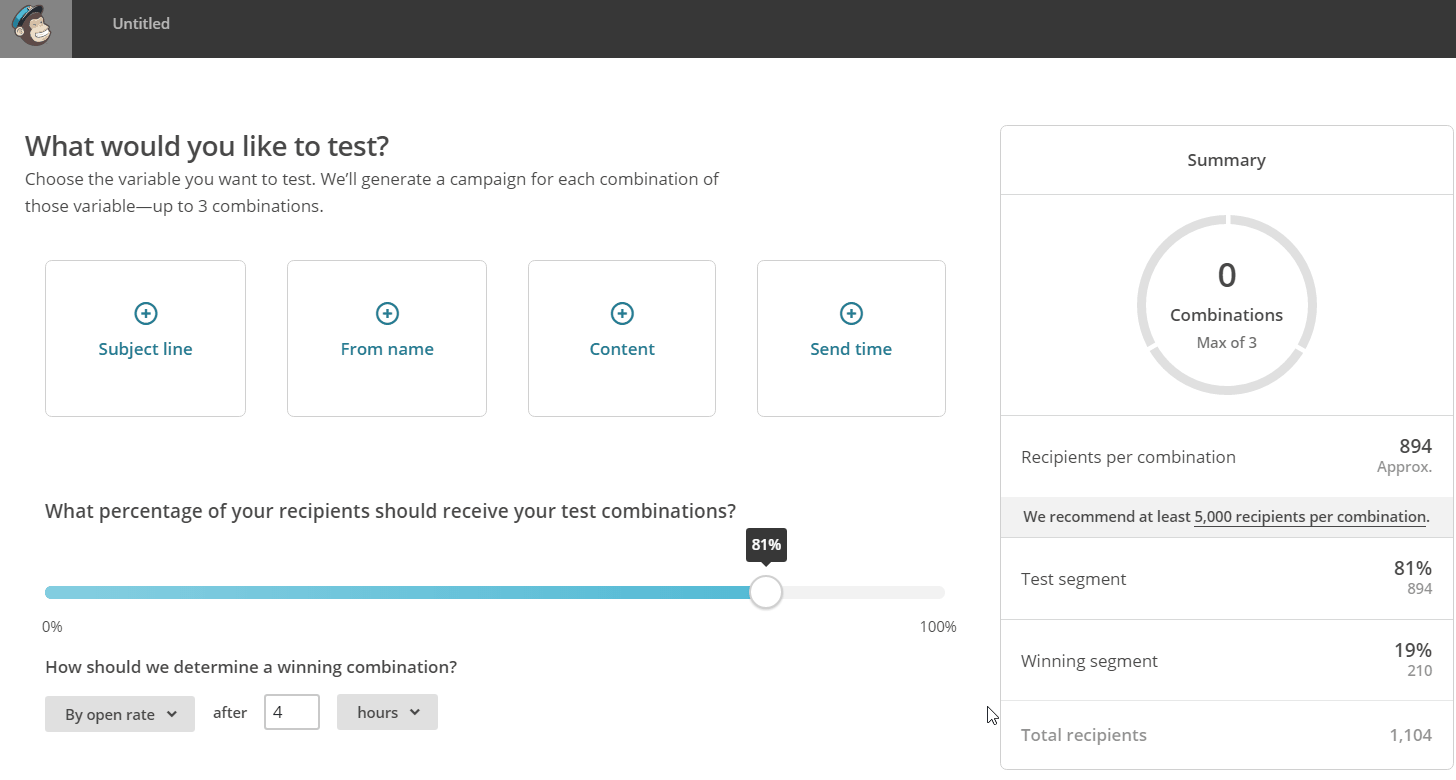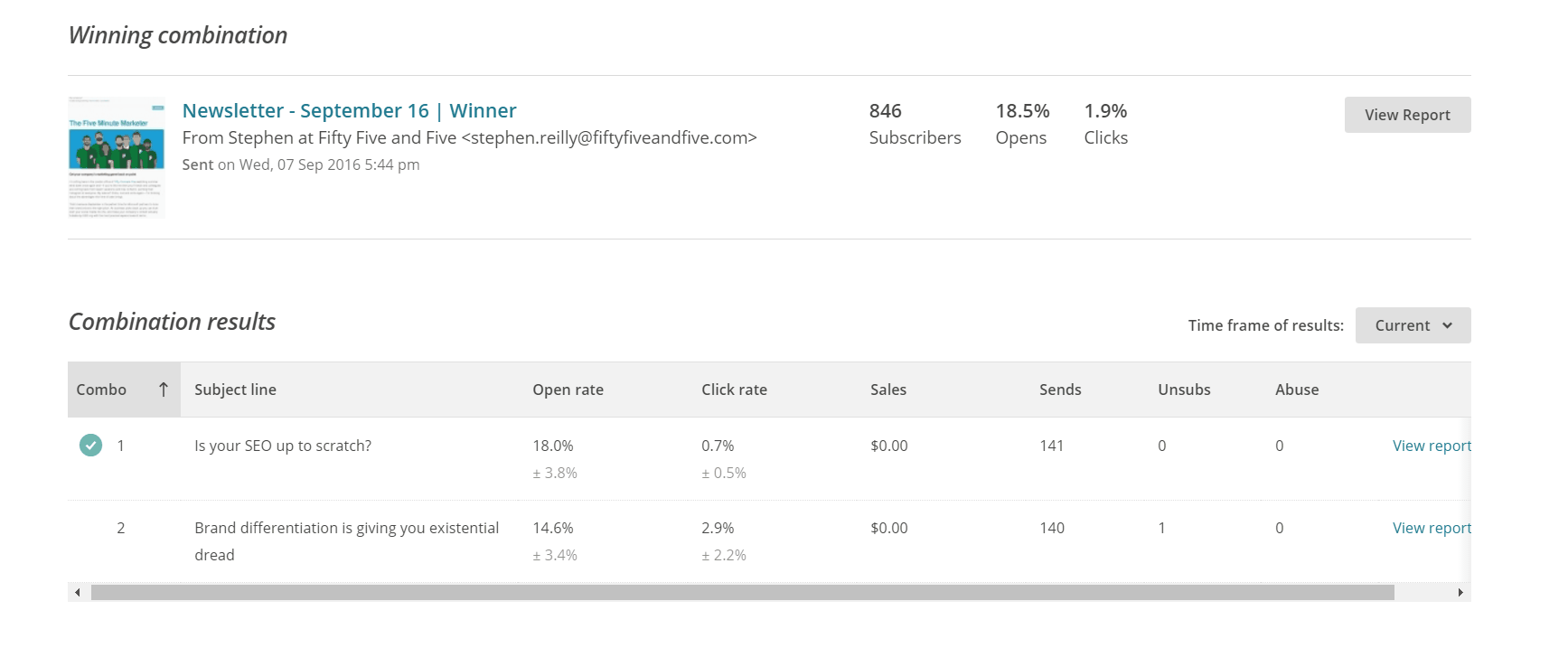How often—when you’re cruising the Internet on the lookout for marketing tips—do you come across ideas, in terms of your marketing strategy, to ‘change things up to get people’s attention’, ‘find a new way to impress’ or ‘market to people who don’t even exist!’ With that being said, for certain aspects of your strategy or for a particular campaign it’s useful to know what kind of impact your efforts are having. That’s where A/B testing in MailChimp comes in. My blog today is an exploration of this method by asking the question: how do you know that your email campaign or strategy is reaching its full potential with your audience?
The Internet is choc-a-bloc with content trying desperately to grab your attention. Even the best blog post in the world will struggle to keep your readers’ attention if you have product adverts down the side of the page. By contrast, a white paper stands out from the crowd and draws on that most precious of commodities: time. If someone downloads and really reads your white paper, they’ll have really engaged with you, your ideas and your brand. And nothing’s more valuable than that.
What is A/B testing in MailChimp?
The most well-known and most consistently used form of split testing is for email. Two (similar but not identical) emails can be compared to see which one would perform better. You can analyse open rates, click rates, engagement and everything else to see which produced better engagement. Essentially, split testing allows you to send two slightly different emails to a small portion of your mailing list to see which performs the best, so you know which one will likely have a greater impact on your clients and customers.
This method can be used to test other aspects of your content marketing strategy too. For example, if you are trying to choose between two (similar, but not identical) landing pages for your new website, you can create an experiment to see which landing page would perform better among a sample group of interested parties.
Make better decisions, never stop improving
If you’ve ever wanted to know:
- What subject lines are the most powerful or effective?
- Is there a particular day of the week when people are more inclined or amenable to reading your brilliant newsletter?
- How does different content or templates change how your mailing list engage with your email?
These are all questions to continually ask of your email campaigns and with A/B testing you can get a handle on the best way forward for your content, giving you the best chance of engagement and lead generation. There are so many variables that you may not be aware of when it comes to putting together something like an email campaign, and that’s where A/B testing in MailChimp can really lend a helping hand.

Every subject line is a pitch
I could, for example, base this entire post on subject lines alone. For instance:
- Did you know that 33 percent of recipients open emails based solely on subject line?
- Or that 69 percent of email recipients report email based only on the subject line?
- 40 percent of emails are opened on mobile first and such screens can only fit about 4-7 words
- Emails with “you” in the subject line were opened 5 percent less than those without.
These stats continue and you can read the full list here. Not only that, you can also read about both Adam Grant as well as Daniel Pink’s thoughts on the importance on the email subject line for further insight.

Tips for creating business growth through A/B testing in MailChimp
Let’s say you have a marketing list of 100,000 recipients and you want to test the performance of two subject lines. You will create an ‘A’ and ‘B’ version—with version A holding one subject line and version B holding the other. Then you would send these versions to 1 percent of your recipients (500 receive version A, 500 receive version B). Based on the open rates or click rates of both versions the system will decide which is the winning subject line. This wining version will then be sent to the remaining recipients on your list (i.e. 99,000). For example, in MailChimp, the split test goes to just over 30 percent with the winning email version goes to just under 70 percent.
So, there you go. Content marketing is all in the percentages and small tweaks here and there can pay real dividends. By employing A/B testing in MailChimp email campaigns hopefully you’ll see a spike in the right direction.

